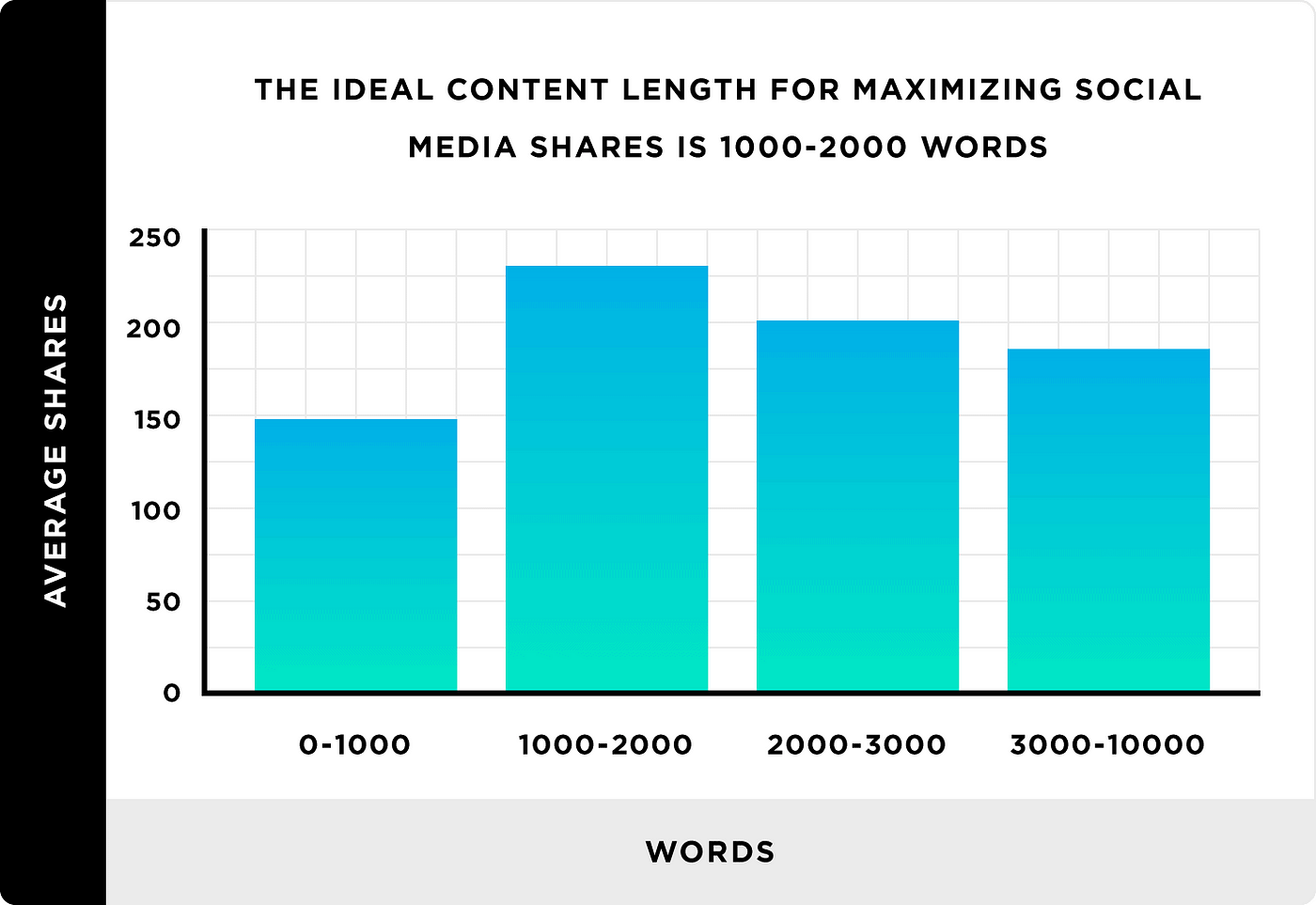Get your free daily journal prompts template in Notion.
Stay organized, save time, and start writing now.
You'll be redirected to Gumroad to download.
Just because it’s the Internet doesn’t mean your article should be as long as possible.
Editing and revision are still crucial.
There must be a sweet spot, somewhere in between 280 characters, and the reading time of a popular longform essay.
So let’s think about: how long should a blog post be?
The classic answer is: “It depends.”
And it really depends on the *channel* you’ve picked for your content.
Medium is than LinkedIn.
LinkedIn is different than a random Google search.
Google is different than Twitter threads.
But there is a point of diminishing returns, especially with social sharing.
What is The Answer for Blog Post Length?
The team at Backlinko did a study of the length of written content that was shared on the most popular social platforms. After looking at more 900 million blog posts and articles, they determined that content between 1000–2000 words was shared the most.
Check out the graph below:

If you’re looking for great shares and for your content to be consumed, that’s the right length.
However, if you’re doing SEO and need more *links* to your posts, content that is greater than 3000 words receives more backlinks than social shares.
How do you decide how long to make your blog post?
- Always consider your goals before writing. Where do you want this to live? What’s the message or information that you want as the takeaway? Write with a purpose and job in mind. If it’s a few actionable tips, that will be a different form than a comprehensive analysis of the state of life insurance in the United States. If a comprehensive analysis can’t be done with a few quick tips, then don’t expect it to get widely shared.
- Write to the form. That said, can you drill your big research project into an executive summary? If so, promote that to be shared instead.
- Write for clarity and understanding. Sometimes your writing will need data to back it up, other times it won’t. However, clarity should always be top of mind.
- Adjust your expectations. Your 10,000-word guide on freelancing may not be shared that often on Twitter. But if you’re trying to hit number one in the search results, then perhaps(?) you’ve done your job (it also depends on what else has been published). Point being, know what’s more likely to be shared and what isn’t.
- Create your length based on the channel. Do your research about social vs. search vs. video vs. email and what works best in each of these. Don’t expect thee same exact piece of content to work in each. The themes may work, but the format and style will need to be different.


